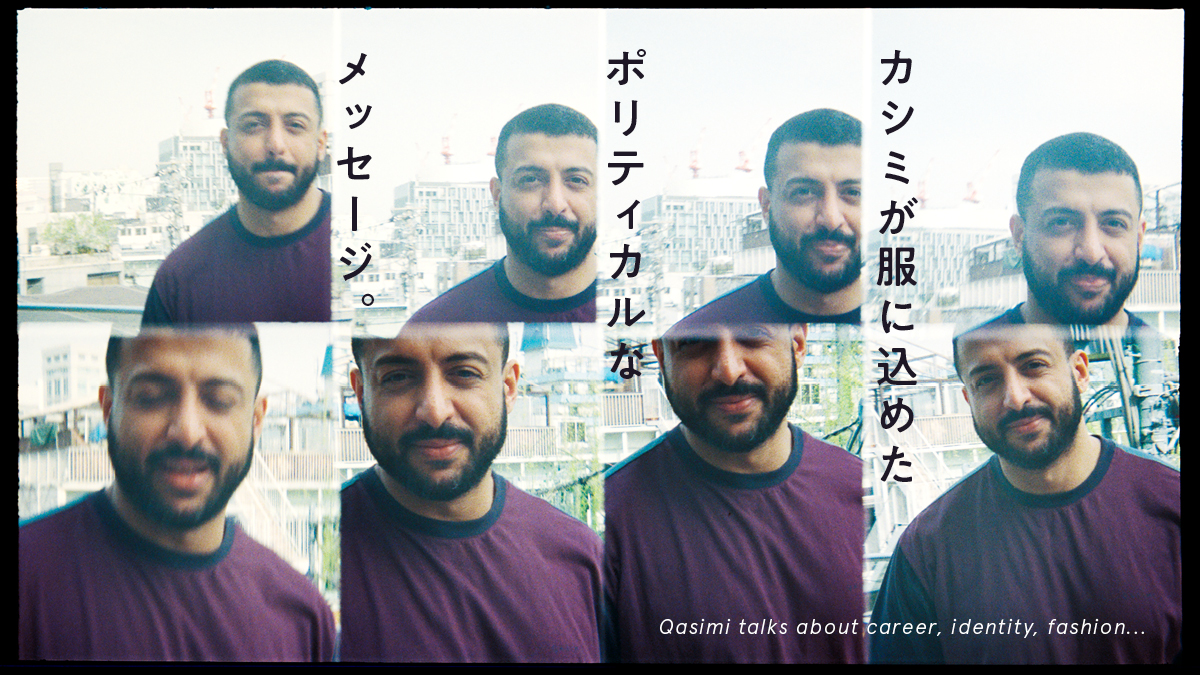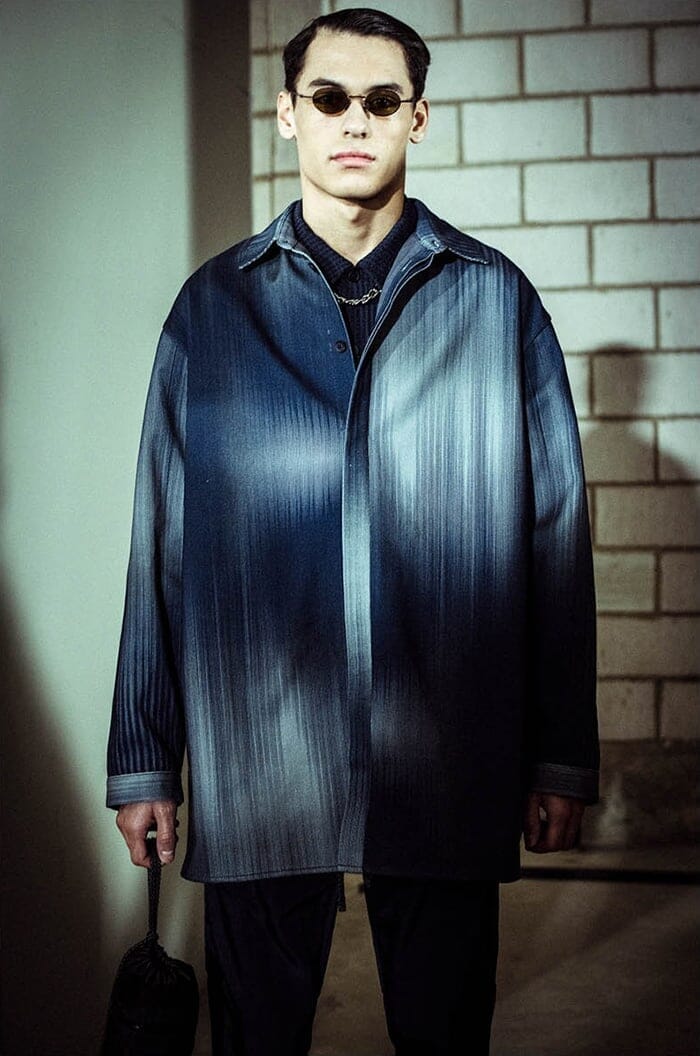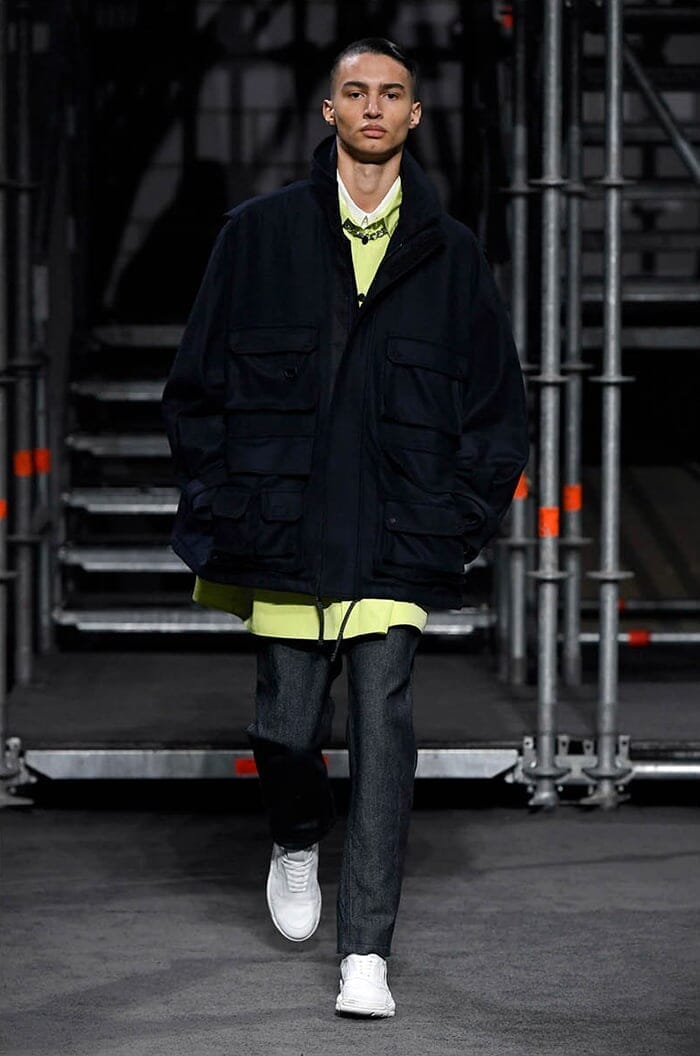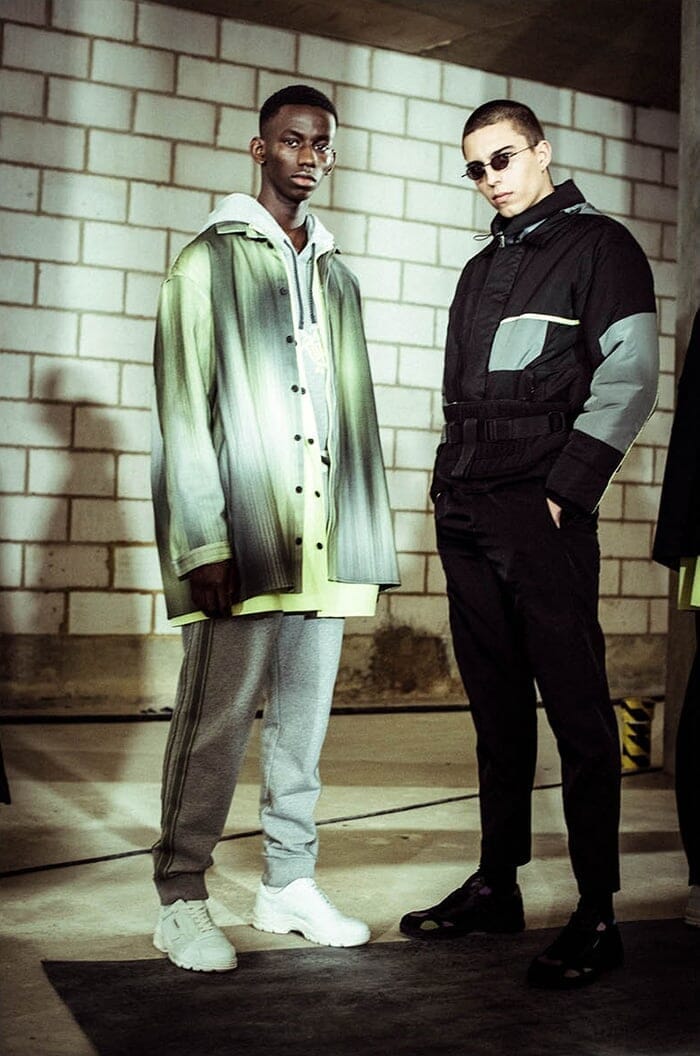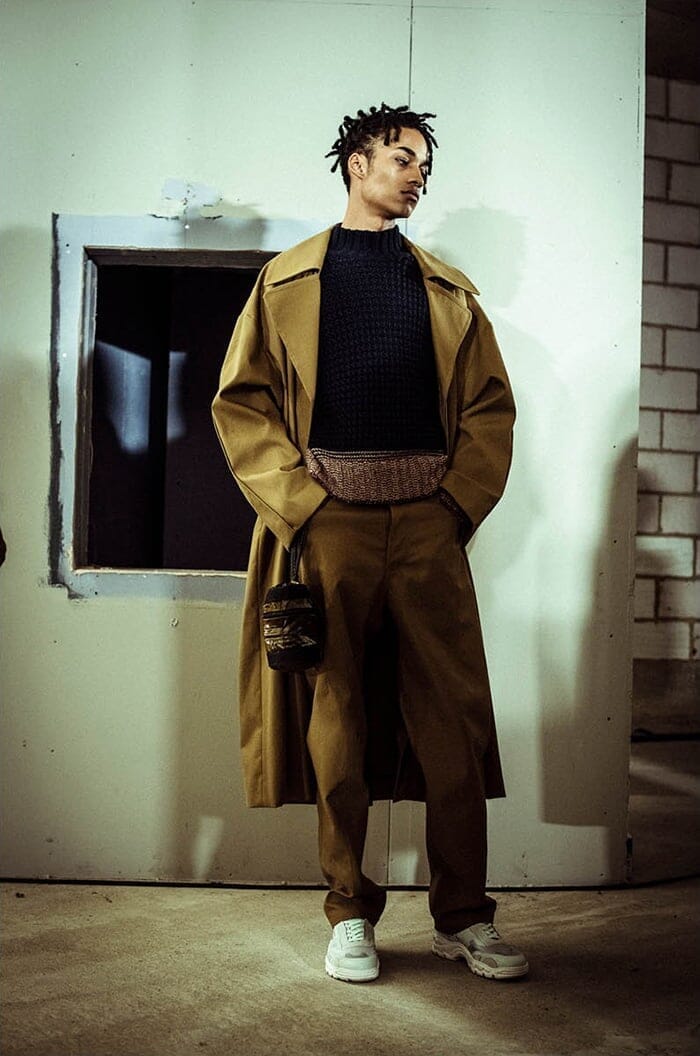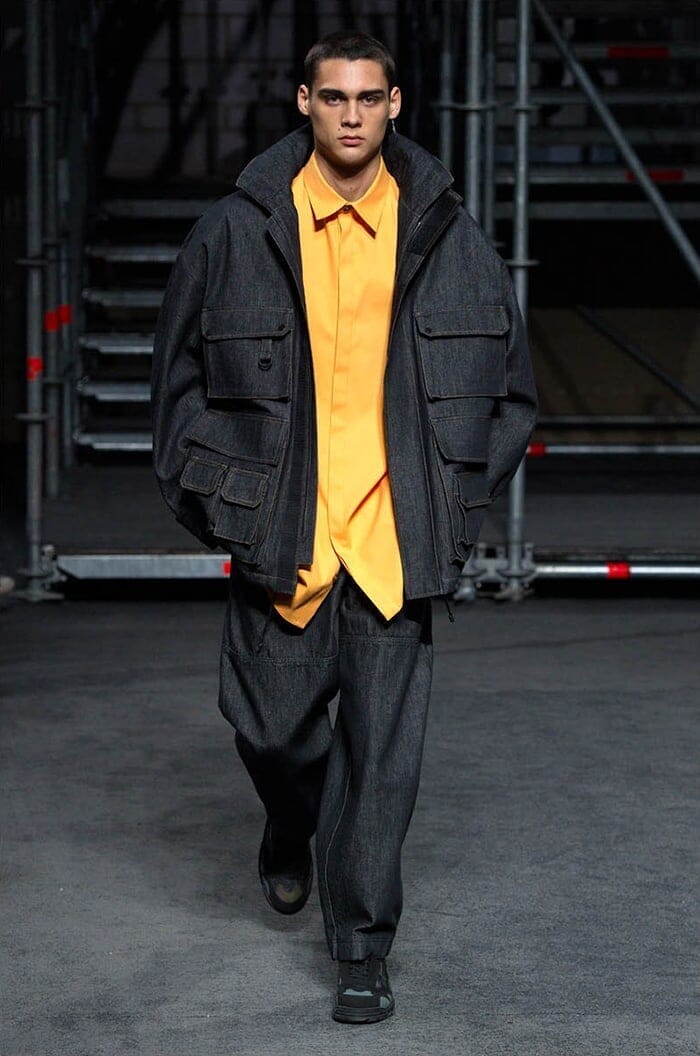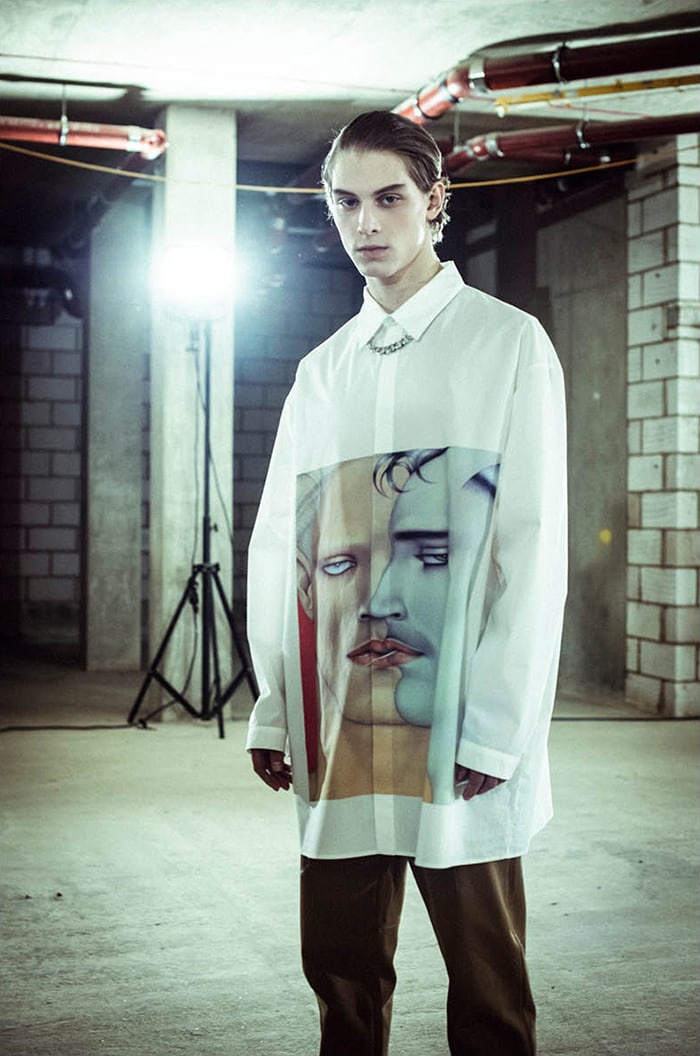On that beautiful T-shirt was written "The End" in Arabic. On the back were the words "It ended before it begins" in English. It is difficult to guess what ended and what began (or did not begin) from these words alone; the word "end" may hide some sad memories, or it may be a cheerful message that an end has been put to a sad past. But at the very least, KASHIMI's Spring/Summer 2019 collection is elegant and light, full of nomadic freedom, and certainly suited to strong sunlight.
Before moving to England at the age of nine, Khalid Al Qasimi, the designer behind "Qasimi," witnessed two wars in his native Middle East. The Iran-Iraq War and the Gulf War. So, even at a very young age, I thought about and understood what war was all about. Politics was always close to my heart. Since his debut as a designer, he has continued to incorporate political messages into his designs, such as his Gulf War-themed collection, which is easily unimaginable given his sophisticated appearance.
"When I would come home from school and sit around the dinner table with my family, politics was always the topic of conversation. I knew that at home they would ask, 'What do you think? so I had to prepare my answers. It's nerve-wracking (laughs). But it was a great experience to know that even family members have different views. I learned at a very young age that there are different ways of looking at things in the world.
While he acknowledges that this background has a significant impact on his values, he does not assert it loudly in order to avoid being pigeonholed into the category of "Middle Eastern designer. While he is very sympathetic to the "diversity" and "inclusion" movement that is sweeping through the fashion industry, it may not be in keeping with his sense of aesthetics to be a part of it.
It may have been the influence of my family. I think there was an awareness from a young age that it is not very beautiful to show off one's background and knowledge. There was a certain modesty in my family.
In the turbulent Middle East, his childhood was very creative. He grew up with a father who was knowledgeable about architecture, history, and photography, and a mother who loved fashion and made her own clothes. He used to follow his mother when she went shopping for fabrics, giving her advice even at a young age. Her twin sister is currently traveling the world as an art curator.
However, no one in his family ever imagined that he would become a fashion designer. After graduating from boarding school in England, he went to "University College London" (UCL), majoring in French and Spanish, but his love for fashion never cooled and he transferred to the foundation department of "Central Martins College of Art and Design". As is well known, it is a prestigious fashion school. Hence, many students there aspire to become fashion designers. Khalid, who was "a little fed up" with such a situation, entered the "AA School," an architecture school, to study spatial design after completing the basic course.
It was a great experience. I learned a lot about how to perceive space and the relationship between people and space. But I couldn't stop thinking about fashion. I went back to Saint Martin's and majored in womenswear design.
After graduation, he presented several collections in Paris and London before launching "KASHIMI" in 2008 in his home base of London. At the time, the brand also offered womenswear, but in 2014, it was relaunched as a brand specializing in menswear.
